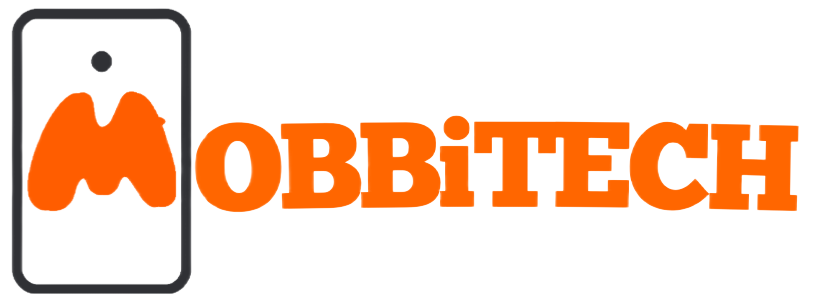Table of Contents
The cryptocurrency market is expansive, filled with a plethora of options ranging from established coins like Bitcoin and Ethereum to newer, riskier assets often dubbed “shitcoins.” In 2025, many investors are looking towards these alternative coins for potential high returns. This article highlights seven shitcoins that are worth considering for investment, weighing their potential benefits against the associated risks.
Understanding Shitcoins: What Are They?
Shitcoins are often described as cryptocurrencies that present little to no value, typically lacking a solid use case or backing by a reputable development team. Unlike established cryptocurrencies such as Bitcoin or Ethereum, shitcoins generally do not have a substantial market presence or well-defined purpose. They often emerge in the rapidly evolving crypto market, driven by speculative trading and hype rather than robust fundamentals.
Common misconceptions about shitcoins often stem from the assumption that all low-value coins are worthless or scams. While some undoubtedly lack any foundational merit, not all shitcoins fit this profile. Certain projects may possess innovative ideas or unique technologies that, with time and appropriate market conditions, could lead to significant advancements. However, due diligence is crucial when navigating this space, as many projects fail to deliver on their promises.
Selection Criteria
To select the top seven shitcoins for 2025, several factors were considered:
- Market Capitalization: A measure of the total value of a cryptocurrency, indicating its public interest and potential stability.
- Trading Volume: The amount of cryptocurrency that has changed hands over a specified period, reflecting liquidity.
- Technology Fundamentals: The underlying technology and innovation adopted by the coin.
- Team Background: The expertise and reputation of the team behind the cryptocurrency.
- Development Roadmap: Future plans and milestones that can affect the coin’s growth and adaptability.
- Community Support: The level of community engagement can often play a crucial role in a coin’s success.
1. Dogecoin (DOGE)
Market Cap: Approximately $8 billion
Trading Volume: $200 million
Technology Fundamentals: Originally created as a meme coin, Dogecoin has evolved to support various charitable initiatives and crowdfunding efforts. Its Scrypt-based algorithm assures a more decentralized mining process.
Team Background: Founded by software engineers Billy Markus and Jackson Palmer, Dogecoin’s community-driven nature has been instrumental to its popularity.
Development Roadmap: Dogecoin has a relatively laid-back development approach, prioritizing community needs over aggressive upgrades. Future plans include scaling technology to accommodate increased transaction volumes.
Risks: Primarily driven by social media hype, Dogecoin is susceptible to price volatility and lacks strong technical advancements compared to competitors.
Potential Benefits: Its wide acceptance in the cryptocurrency community and low transaction fees may lead to increased usage as a digital currency.
2. Shiba Inu (SHIB)
Market Cap: Approximately $6 billion
Trading Volume: $150 million
Technology Fundamentals: Shiba Inu functions as an ERC-20 token on the Ethereum blockchain, created as an experiment in decentralized community building. It incorporates features like the ShibaSwap exchange.
Team Background: The Shiba Inu community is largely anonymous, which can be a double-edged sword regarding the development of trust and transparency.
Development Roadmap: The roadmap includes plans for decentralized finance (DeFi) integration and expanding its ecosystem with new projects.
Risks: Its strong reliance on social media and speculative trading makes it vulnerable to market whims.
Potential Benefits: The active community can drive engagement, and if Shiba Inu sustains its ecosystem developments, it may hold long-term value.
3. SafeMoon (SAFEMOON)
Market Cap: Approximately $4 billion
Trading Volume: $50 million
Technology Fundamentals: SafeMoon utilizes a unique model that charges a tax on transactions to reward holders and reduce selling pressure. It aims to create a self-sustaining ecosystem.
Team Background: Initially launched by a team whose identities have since become clearer, the project has transitioned into a more structured organization with intentions of transparency.
Development Roadmap: Future developments include a SafeMoon wallet and DeFi project integrations, promising continued ecosystem growth.
Risks: The model is complex and relies on constant new investment for price stability, which can lead to unsustainable growth patterns.
Potential Benefits: If executed well, its unique tokenomics could reward long-term holders and create a robust community-driven platform.
4. Floki Inu (FLOKI)
Market Cap: Approximately $3 billion
Trading Volume: $70 million
Technology Fundamentals: A meme coin inspired by the dog-themed trend, Floki focuses on integrating DeFi and NFT functionalities alongside its meme attributes.
Team Background: The development team is relatively transparent, often engaging with the community through social media platforms.
Development Roadmap: With ambitious plans for an NFT marketplace and educational endeavors, Floki aims to create a sustainable ecosystem that combines fun and functionality.
Risks: Like many meme coins, Floki is largely dependent on market sentiment and speculative trading rather than solid fundamentals.
Potential Benefits: Its vibrant community and potential technological integrations could offer substantial growth if the market dynamic remains favorable.
5. Akita Inu (AKITA)
Market Cap: Approximately $2 billion
Trading Volume: $30 million
Technology Fundamentals: Akita Inu mirrors the functionalities of other dog-themed coins alongside strong community engagements like charity events.
Team Background: The team behind Akita is largely anonymous, promoting a decentralized community operation that is common in the meme coin space.
Development Roadmap: Ongoing projects aim to improve liquidity and further engage its community with potential decentralized applications.
Risks: The coin has faced significant market volatility and skepticism regarding its long-term sustainability without substantial technological innovations.
Potential Benefits: Its community-centric approach and meme coin appeal could provide ongoing engagement and potential for price growth.
6. Baby Doge Coin (BABYDOGE)
Market Cap: Approximately $1.5 billion
Trading Volume: $20 million
Technology Fundamentals: Baby Doge Coin is based on the Binance Smart Chain and aims to combine the nostalgia of Dogecoin with a ‘hyper-deflationary’ mechanism.
Team Background: The founders are relatively anonymous; however, the team actively engages with the community through social media initiatives.
Development Roadmap: Expectations of future utility through enhanced community projects and rewards potentially distinguish it in the expanding dog coin category.
Risks: Many investors approach this coin with caution due to its lineage and speculative nature, which heighten its volatility risks.
Potential Benefits: Should the concept grow, its community-oriented approach may enhance its position in the market.
7. Kishu Inu (KISHU)
Market Cap: Approximately $1 billion
Trading Volume: $15 million
Technology Fundamentals: Kishu Inu functions without a central authority, offering a decentralized, community-driven ecosystem designed to provide fast transactions.
Team Background: The founding team remains largely anonymous, typical within this genre of cryptocurrencies, with strong community engagement.
Development Roadmap: Future objectives encompass building a DeFi platform, aiming to create a self-sufficient ecosystem.
Risks: As with similar cryptocurrencies, reliance on continuous new investments places Kishu at risk of extreme market fluctuations.
Potential Benefits: If the technology evolves as planned, it could capture a significant niche in the decentralized finance market.
Future Trends in the Shitcoin Market
The shitcoin market has gained significant attention over recent years, and several trends are anticipated to shape its evolution by 2025. One central theme is the rise of emerging technologies within the cryptocurrency space. Projects leveraging advancements in blockchain technology—such as layer-two scaling solutions, interoperability protocols, and decentralized finance (DeFi) innovations—are likely to gain traction. Such technologies can enhance the utility and functionality of shitcoins, attracting more users and investors alike. Developers may focus on improving transaction speeds and security features, leading to an increase in the overall market quality.
Conclusion
Investing in shitcoins can provide unique opportunities, but it comes with considerable risk. The coins discussed above represent a mix of community appeal, innovative features, and roadmap growth potential. Nonetheless, investors should proceed with caution, staying informed and aware of the volatile nature of this market. As the cryptocurrency landscape continues to evolve, the successful selection of altcoins could yield fruitful returns, but it’s critical to maintain a balanced portfolio and avoid overexposure to any one asset class.
Disclaimer: Cryptocurrency investments, particularly in altcoins, are highly speculative and come with significant risks. This article does not constitute financial advice, and readers should do their own research before investing in any cryptocurrency. Always consider consulting with a financial advisor.
Also Read:

